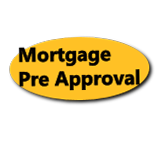
Whether looking to buy a home in Wilmington or Leland, in New Hanover or Brunswick Counties or any other area or County in North Carolina, a home buyer needs to understand mortgage loans, mortgage qualifying, mortgage payment affordability, and the mortgage application process. The reason for this is very basic: most buyers need a mortgage loan to purchase and close on the home to be purchased!
Keeping the Explanation Very Simple!
There are three basic mortgage loans available to home buyers:
Conventional Mortgage: a mortgage loan not insured or guaranteed by any agency of the federal government
FHA Mortgage: a mortgage loan insured by the Federal Housing Administration
VA Mortgage: a mortgage loan guaranteed by the Veterans Administration
USDA Mortgage: a mortgage loan insured by the United States Department of Agriculture.
The type of mortgage(s) available to a buyer is primarily determined by the buyer’s financial circumstances, such as the amount of down payment and income. In addition, there are different down payment requirements, different mortgage qualifying guidelines, different mortgage-related fees and different credit report standards with each mortgage loan.
A VA Mortgage is available to Military Veteran home buyers and requires very little or no down payment, has more liberal mortgage qualifying income and credit standards and allows the buyer to finance their closing costs. There is a VA Funding Fee, which is usually added to the mortgage. For first time users, no down payment requires a 2.3% fee, 5%-10% down payment requires a 1.65% fee, and 10% or more requires a 1.4% fee.
An FHA Mortgage is available with a down payment of 3.5%. There is a Mortgage Insurance Premium (MIP), which includes an up front premium that is generally financed by the buyer and added to the mortgage and a monthly premium which is added to the monthly mortgage payment. The FHA mortgage insurance can’t be canceled if you make a down payment of less than 10%. When you put 10% or more down on an FHA loan, you pay the mortgage insurance premiums for 11 years rather than the life of the loan.
Conventional Mortgages generally require a down payment of 20%. However, with a down payment of 5% and less than 20% , Private Mortgage Insurance is required which includes an up front premium paid at closing or added to the mortgage, and a monthly premium added to the monthly mortgage payment.
USDA Mortgage is available with no down payment and for a 30 year term and closing costs can be financed in the purchase price. To be eligible for a USDA loan, applicants must meet the basic eligibility requirements set forth by the USDA, which cover credit, income, property usage and home location.
Mortgage Terms:
Fixed Rate Mortgage: a mortgage loan where the interest rate remains the same for the entire term of the loan. The most common and preferred is a 30 year loan for first-time buyers. While other terms are available, the 15 year mortgage loan generally provides a slightly lower interest rate than a 30 year mortgage.
Adjustable Rate Mortgage: a mortgage loan where the interest rate adjusts at given intervals, generally one, three or five years. The initial interest rate will be lower than the 30 year fixed rate mortgage loan, and provides the ability for a buyer to obtain a larger mortgage without increasing the initial mortgage payment. Important considerations are the interest rate adjustment caps at each interval period and for the lifetime of the loan. Homebuyers need to analyze the benefits and risks involved with adjustable rate mortgage loans.
Mortgage Payment:
A mortgage payment consists of principal and interest, monthly real estate taxes, monthly homeowners insurance and monthly mortgage insurance premium, if applicable, and is commonly referred to as PITI.
For mortgage qualifying puposes, if there are homeowner association monthly fees, they are also considered.
Mortgage Qualifying:
Important criteria in the mortgage approval process are the analysis of a home buyer’s income, employment history, credit score and monthly debt. Of importance, income is income only if it is reported to the IRS and can be verified.
There are various lenders who provide mortgage loans to buyers who do not meet general mortgage qualifying standards and guidelines.
There are Mortgage Income Qualifying Guidelines lenders follow in the mortgage approval process, commonly referred to Mortgage Qualifying Ratios. While these guidelines vary from one mortgage type to another and sometimes from one lender to another, there is an acceptable standard a home buyer can rely on in calculating an affordable mortgage payment.
The Mortgage Qualifying Standard Years Ago
28%/36%: a monthly mortgage payment(PITI) should not exceed 28% of the home buyers monthly gross income, commonly referred to as the front ratio; a monthly mortgage payment(PITI) plus monthly recurring debts should not exceed 36% of monthly gross income, commonly referred to as the back ratio.
And that mortgage qualifying standard met the test of time until Banks and Lenders relaxed all mortgage qualifying guidelines during the real estate boom years of 2000-2005.
Mortgage Qualifying Today: There is no set mortgage qualification standard. Mortgage interest rates and mortgage qualifying ratios may vary depending on mortgage type, credit score and down payment.
There is so much more to the mortgage application and mortgage qualifying process than the basics discussed here. Mortgage standards and qualifying guidelines are always changing. Look for more information to be posted regarding the information needed for a mortgage application, the mortgage application process, closing cost charges and more. Have a question, do not be afraid to ask.
Upon making the decision to look for a home, it is extremely important for a home buyer to contact and meet with a Mortgage Representative from a bank or a mortgage company for the purpose of obtaining mortgage pre approval and getting a thorough understanding of the mortgage qualifying process. Not sure who to call? Recommendations from friends or family who recently purchased is one option, where you bank is another and the REALTOR you are planning to look at homes with is another.
The mortgage application and mortgage approval process is important in a real estate purchase. It will be much more beneficial if this meeting is in person, and not simply done on the phone!



